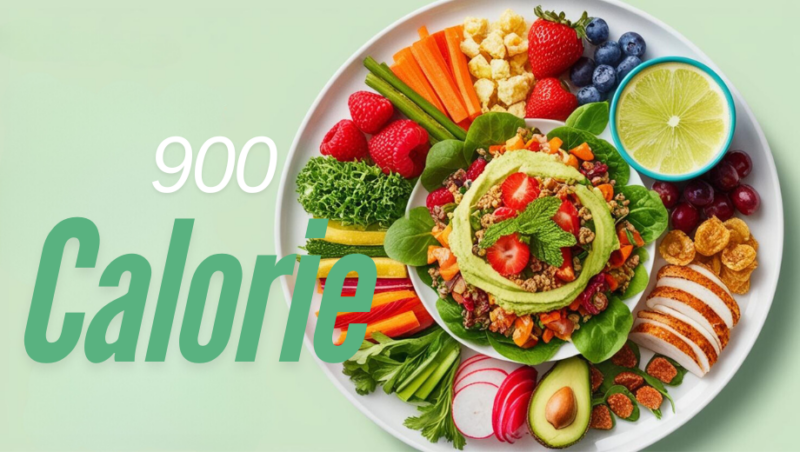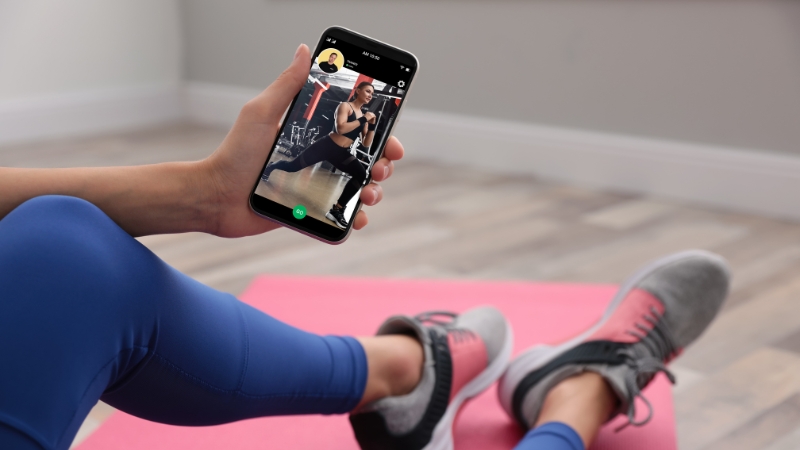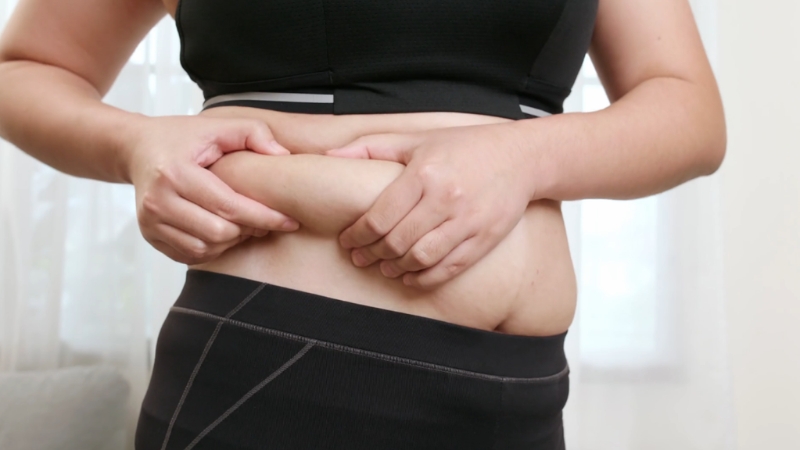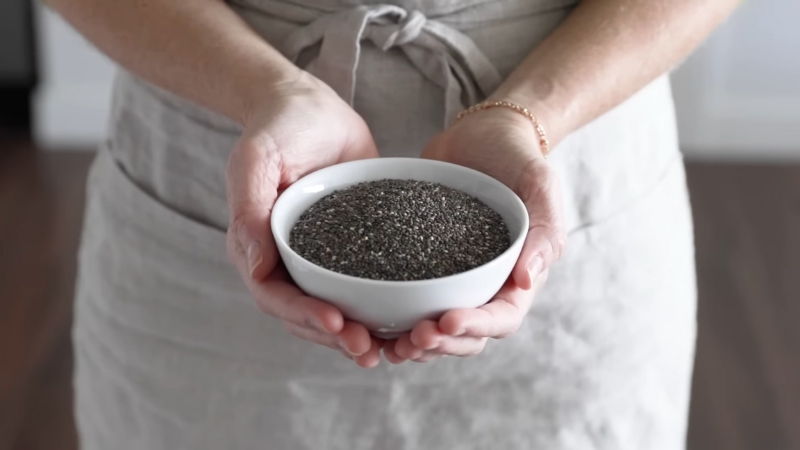
Share Post:
Today, I’m opening up a discussion on a dieting approach that’s quite controversial – limiting yourself to 900 calories a day for weight loss.
It’s a method that catches the eye, but based on experts like Kristen Fleming, RD (who holds a Master of Science in Nutrition and over her 8 years of experience in dietetics) the straightforward answer is no, it’s typically unsafe without medical supervision.
So, why do people consider it, and what should we know before even thinking about such a drastic reduction? Let’s break it down and look at some healthier alternatives that might be a better fit for your lifestyle.
Table of Contents
ToggleWhat’s the 900-Calorie Diet All About?
The idea here is pretty straightforward: reduce your daily calorie intake to approximately 900 calories. This might look like 300 calories spread across three meals. Some approach this limit through intermittent fasting or opting for one meal a day (OMAD).
This strict limit is not only hard to maintain but can also be challenging to enjoy, considering how little room it leaves for varied nutrition.
What You Can Drink
In a 900-calorie diet, your beverage choices are also limited. You’re looking at mostly water, black coffee, green tea, and herbal teas. These choices are integral to the diet because they help keep energy intake very low and are used to try and curb hunger without adding calories.
However, relying on beverages to stave off hunger can lead to increased irritability and decreased satisfaction with your meals.
Why 900 Calories a Day Might Not Be Safe
@thefitnesschef_ Eating 800 calories a day to lose fat is a crash diet & is disordered. For most adults this is an unsustainable calorie deficit that will be miserable and dangerous. You can eat much more each day and still achieve weight loss without ruining your relationship with food and mental health. Achieving fat loss and health doesn’t have to be this severe. Give yourself energy… ✅ #dieting #weightloss #learnontiktok #caloriedeficit #mentalhealth #nutritiontips #fyp #dietplan #fypシ #weightlosstips
To function properly, most adults require a considerably higher intake: about 2,000 calories per day for women and about 2,500 for men. Drastically cutting this to 900 calories can shock the system, as it’s far below what is typically required to maintain good health and sufficient energy levels throughout the day.
Possible Health Risks
When you reduce your intake this much, short-term side effects like fatigue, nausea, and headaches can appear quite quickly. More alarmingly, long-term health risks such as gallstones and severe nutrient deficiencies can develop, which could have lasting impacts on your overall health. It’s a high price to pay for rapid weight loss.
Better Ways to Manage Your Weight
Mediterranean Diet
Instead of severe calorie restriction, consider the Mediterranean diet, which includes a balance of whole grains, fruits, vegetables, legumes, nuts, and fish. This diet not only supports weight management but also provides a host of anti-inflammatory and antioxidant benefits, which can improve overall health and prevent diseases.
Meal Type
Examples
Breakfast
– Greek yogurt with honey and walnuts – Oatmeal with fresh berries and a sprinkle of flaxseed – Whole grain toast with avocado and a poached egg
Lunch
– Quinoa salad with cucumber, cherry tomatoes, feta cheese, and olives – Lentil soup with a side of whole-grain bread – Grilled vegetable and hummus wrap
Dinner
– Grilled salmon with a side of roasted vegetables – Chicken tagine with olives and lemons – Pasta with pesto, pine nuts, and sun-dried tomatoes
Snacks
– A handful of mixed nuts – Fresh fruit like grapes or a peach – Sliced cucumbers and carrots with tzatziki sauce
Going Vegan
Alternatively, adopting a vegan diet, which excludes all animal products, might be another route. Often lower in fat and calories, a well-planned vegan diet can help reduce weight and improve heart health. Plus, it encourages you to explore a variety of plant-based foods, which can be creative and fulfilling.
Meal Type
Examples
Breakfast
– Smoothie with spinach, banana, almond milk, and chia seeds – Vegan pancakes topped with fresh berries and maple syrup – Avocado toast on whole grain bread with tomato slices
Lunch
– Chickpea salad with tomatoes, cucumber, red onion, and a lemon-tahini dressing – Vegan sushi rolls with avocado, cucumber, carrot, and tofu – Lentil soup with a side of artisanal bread
Dinner
– Stir-fried tofu with broccoli, bell peppers, and teriyaki sauce over brown rice – Vegan chili made with kidney beans, quinoa, corn, and avocado – Spaghetti with marinara sauce and plant-based meatballs
Snacks
– Hummus with sliced bell peppers and carrots – Almonds or walnuts – Apple or banana slices with almond butter
Intermittent Fasting
Intermittent fasting offers another perspective by alternating periods of eating with periods of fasting. This doesn’t necessarily require counting calories as strictly but focuses on when you eat. It can lead to a natural reduction in calorie intake and has been linked to other health benefits like improved metabolic health and possibly longer lifespan.
Meal Type
Examples
Breakfast
– None (during the fasting period)
Lunch
– Grilled chicken salad with mixed greens, nuts, and vinaigrette – Quinoa bowl with mixed vegetables, avocado, and grilled salmon – Turkey and avocado wrap with whole grain tortilla
Dinner
– Steak with asparagus and sweet potatoes – Baked cod with lemon, garlic, and steamed spinach – Pasta with a light tomato sauce and a side of roasted vegetables
Snacks
– Greek yogurt with nuts and honey – A piece of fruit like an orange or pear – Cottage cheese with cucumber slices
If You Must Try a 900-Calorie Diet…
If you’ve consulted with a healthcare provider and have decided to proceed under strict medical supervision, here are some foods that should feature in your 900-calorie diet plan: complex carbohydrates like brown rice, oats, and quinoa; low-calorie fruits such as strawberries and grapefruits; vegetables, especially dark leafy greens like kale and Swiss chard; proteins from lean meats and oily fish rich in omega-3 fatty acids; and legumes and lentils for their protein, fiber, and essential nutrients.
Sieh dir diesen Beitrag auf Instagram an
Ein Beitrag geteilt von Puneeta | Author | Sustainability Expert (@mapleandmarigold)
Wrapping It Up
A diet as severe as the 900-calorie diet carries substantial risks and is usually not recommended without professional guidance. Safer, more sustainable methods of weight loss that support rather than compromise your health are often the best path forward.
In closing, always prioritize your health and well-being over quick results. If you’re considering major changes to your diet, consult with a healthcare provider to ensure your plans are safe and effective.
Related Posts:
- Watermelon Juice for Weight Loss - A Recipe That Can…
- Best Times of Day to Work Out for Strength, Fat…
- Skinny Holiday Cocktails! Fun Without the Extra Calories
- Top 5 Juicing Recipes for Effective Weight Loss in 2025
- Meal Replacement Smoothies for Weight Loss - Top…
- The Risks of Following Kevin James' Weight Loss Approach













